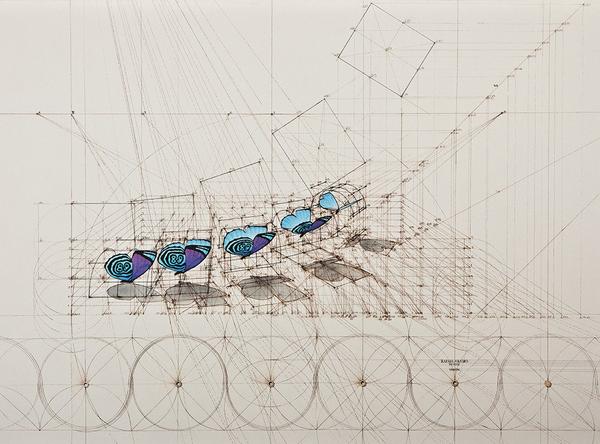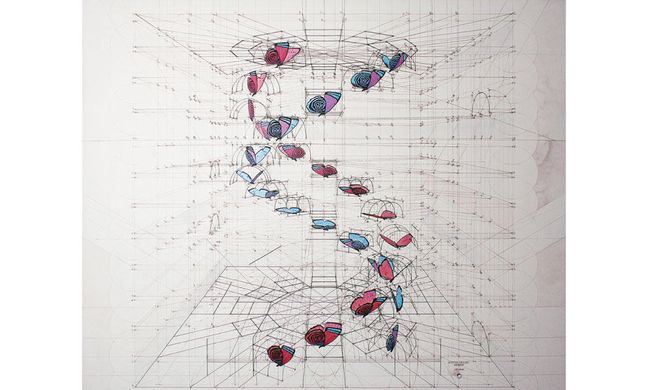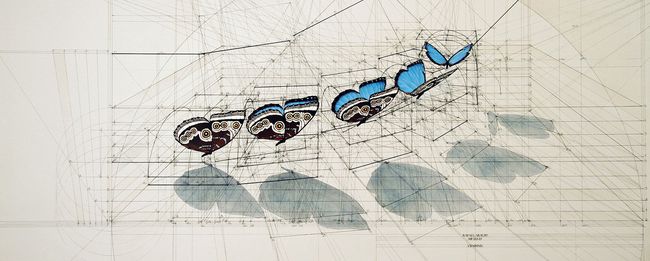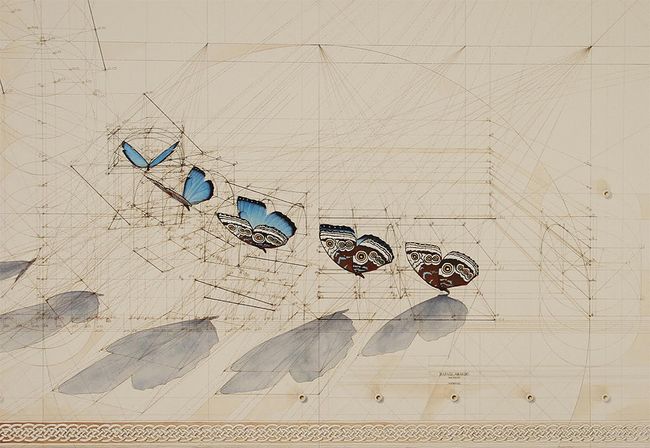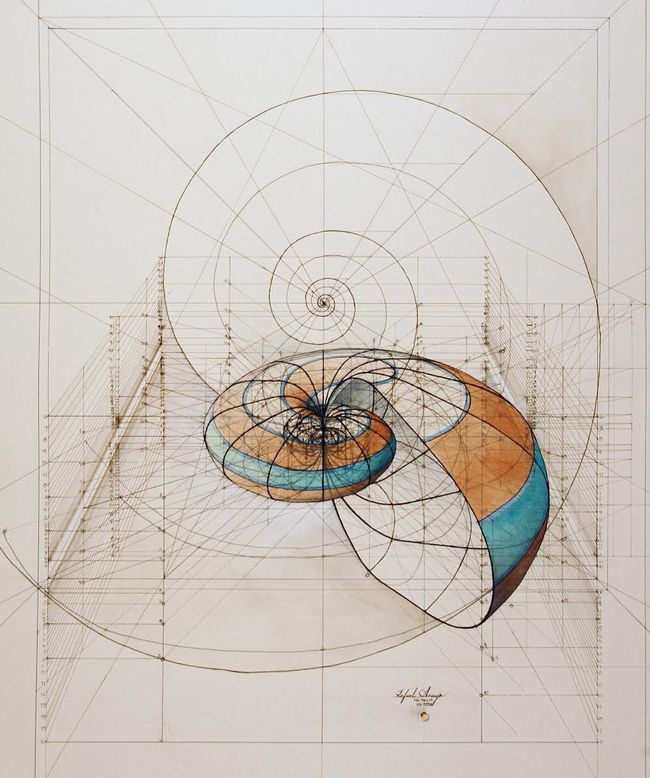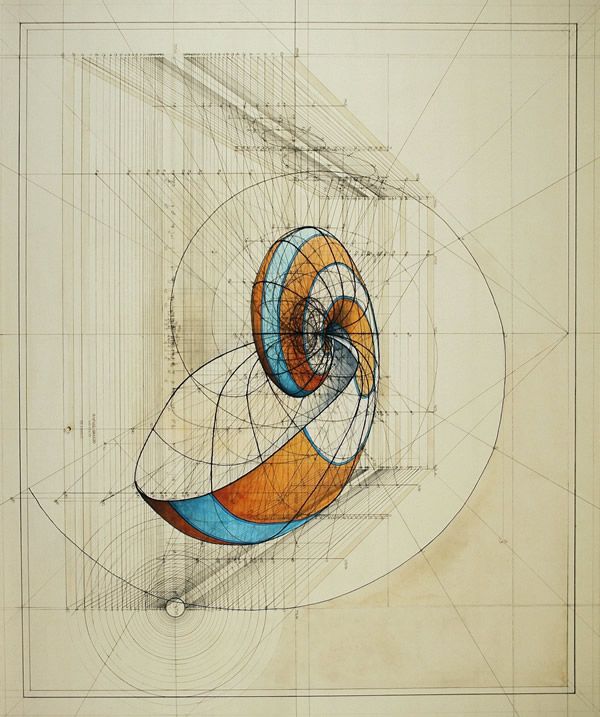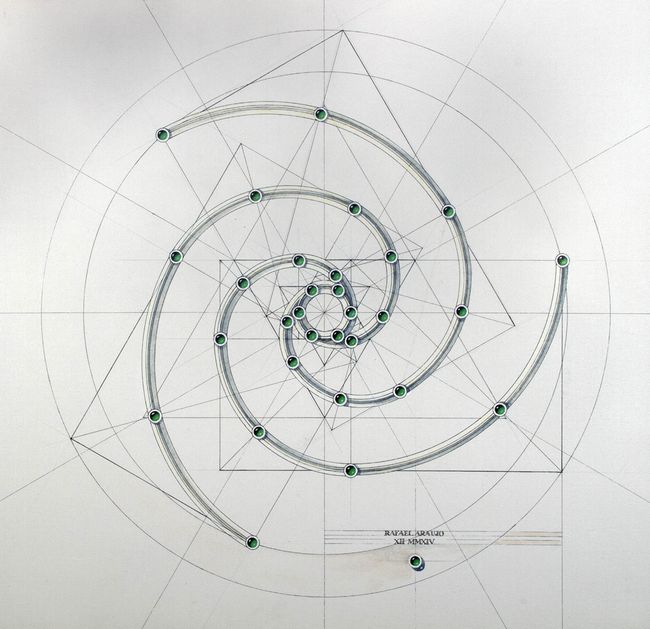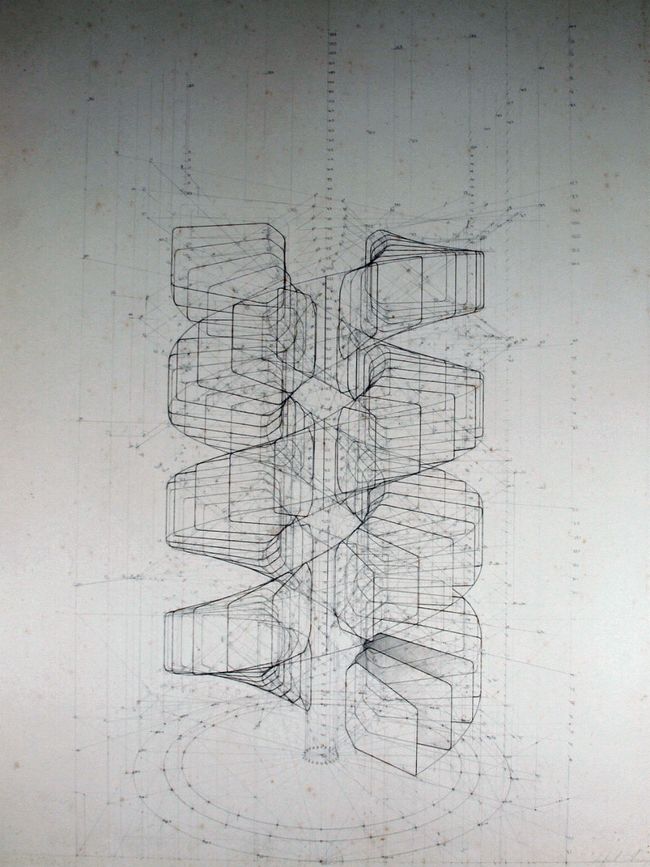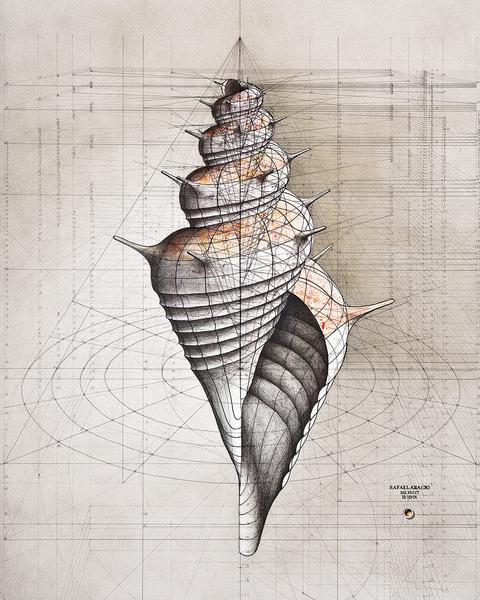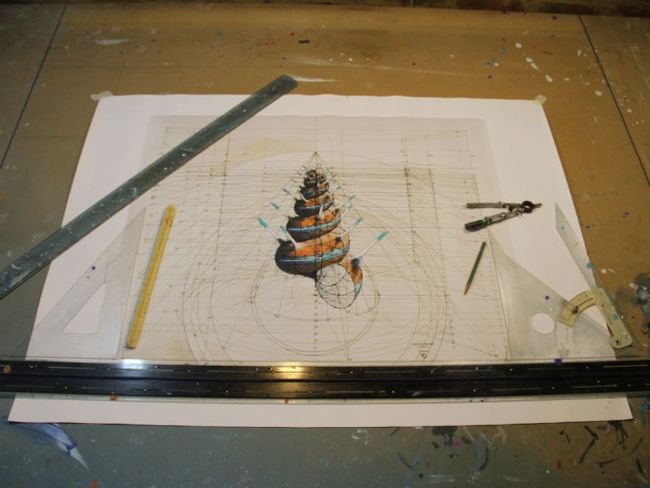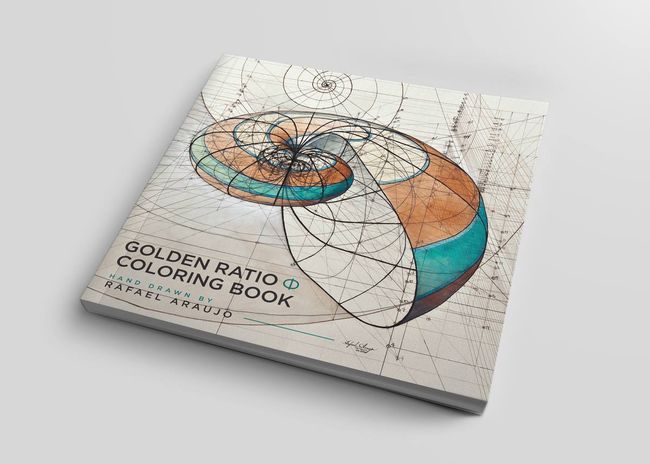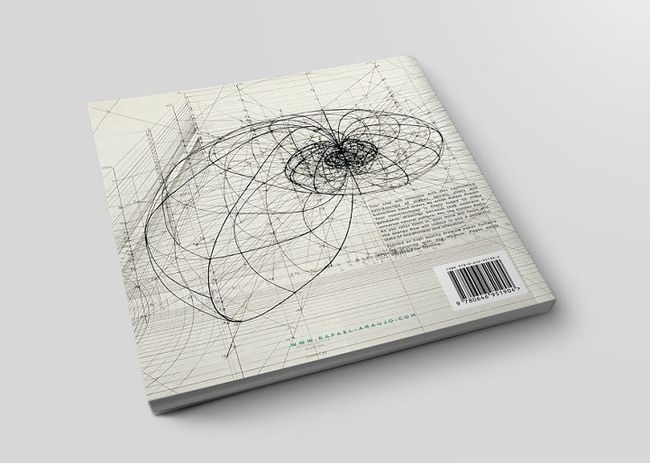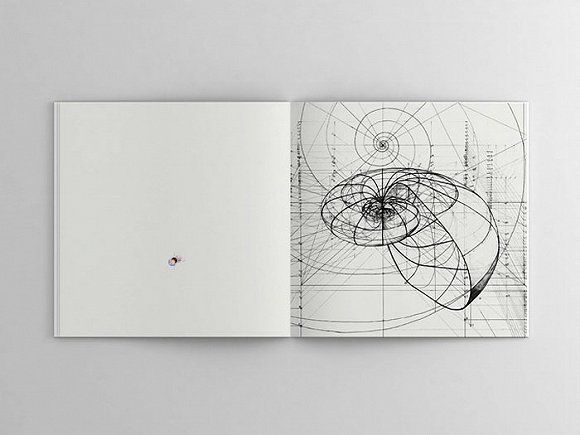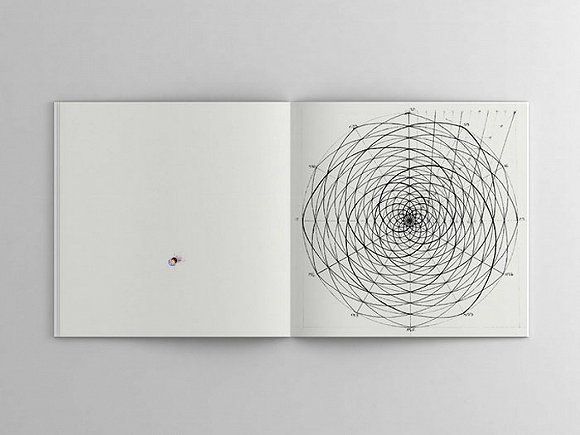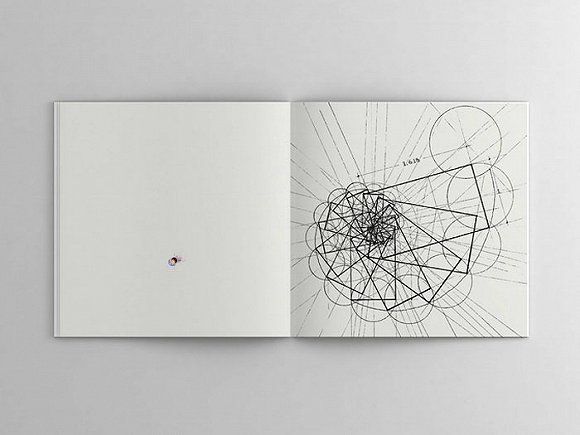今天介绍的这位设计师,如果你在高中数学时代就遇上了他,你的几何学一定会有新的突破。至少我是这样想的。
Rafael Araujo is an architect and illustrator born in Caracas, Venezuela in 1957. For over 40 years he has been drawing beautiful illustrations of nature, entirely by hand. At an old drafting table he adeptly renders the mathematical brilliance of nature with just a pencil, compass, ruler and a protractor. He was fifteen when he first observed intelligent patterns in the work of nature and learned about PHI, the Golden Ratio. This ratio equals 1.618 and is found everywhere in the realm of nature. By applying the Golden Ratio in his geometric formulas the secret of nature's beautiful designs unfolded before his eyes. In his illustrations he leaves the construction lines intact to highlight this natural mathematical framework. Rafael has been featured in CNN World, Wired Magazine, WWF, and exhibited at Stanford University and many other prestigious galleries. With his work it is his greatest hope to inspire a much needed love for our natural environment.
这位委内瑞拉设计师Rafael Araujo的作品极尽几何学之能事。下面张贴的部分画作展现了这位设计师对斐波那契螺旋线、曲面细分与黄金比例等自然世界的复杂几何学的细致研究。仅仅利用直尺、圆规、量角器和铅笔画出的草图,可以让观者从连续的线条中体会几何规律展现的过程。
如果你想更加了解他,可以看看WIRED对他的报道。
Wildly Detailed Drawings That Combine Math and Butterflies
RAFAEL ARAUJO’S ILLUSTRATIONSare bafflingly complex—so complex that you might assume the artist uses a computer to render the exacting angles and three-dimensional illusions. And true, if you were to recreate his intricate mathematical illustrations using software, it probably wouldn’t take you long at all. But the craziest part of all is that Araujo doesn’t use modern technology to create his intricately drawnCalculationsseries—unless, of course, you count a ruler and protractor.
The Venezuelan artist crafts his illustrations using same skills you and I learned in our 10th grade geometry class. Only instead of stashing those homework assignments deep into the locker of his brain,Araujouses these concepts to create his da Vinci-esque drawings. In Araujo’s work, butterflies take flight amidst a web of lines and helixes, a shell is born from a conical spiral, and the mathematical complexity of nature begins to make sense.
He says perspective and angles have always come naturally to him. “When I was young I began drawing perspective almost out of the blue,” he recalls. “I loved three-dimensional drawings and liked to find out ways to locate dots in the space.” Before computer-assisted drawing, there were artists like M.C. Escher, who Araujo counts among his biggest influences. “When I first saw M.C. Escher, I was speechless,” he says. “His artwork was so akin to my geometrical taste.”
Working on an old drafting table, Araujo began drawing his own perspective illustrations, eyeballing the trigonometry to plot dot sequences that would allow him to create curved shapes like double helixes and cones. If you look closely at Araujo’s drawings, you’ll notice each of the main shapes sits within a line-drawn square or rectangle—he began adding this to his works after realizing these scaffolding boxes created a more reliable way to correctly position the dots. “There is naturally a learning curve,” he says. “And as problems are solved, you become more adept and, again, daring.”
As Araujo became more confident in his skills, he began adding ink-drawn butterflies, insects and shells to the canvas and painting them with acrylic in order to add visual complexity to his work. Each illustration takes him upwards of 100 hours, and that’s if he doesn’t mess up. “Painting is very similar to cooking,” he says. “You’ve got to be always careful!”
Even with the added embellishments, his work is restrained and exacting. But that scientific honesty is also what makes his illustrations so visually compelling. Scientists and mathematicians often say there’s a comfort in their work because they know there’s always a right and wrong answer. It’s the same with Araujo’s art.
There’s little gray area to be debated when it comes to angles and lines, and somehow that reliability and predictability translates into something beautiful. “I love Pollock, and enjoy very much casting paint onto a canvas without rules,” he says. “But you’ve got to make it to appear, if not “beautiful,” well done, and that is difficult.”
幸运的是Rafael Araujo将他的部分作品简化,出版了《黄金比例涂色书(Golden Ratio Coloring Book)》,希望让对艺术不大感冒的读者与他笔下精密的贝壳、蝴蝶与花朵来一次亲密接触。里面有20张出自Araujo之手的黑白画作。喜欢的小伙伴可以考虑入手。这都是值得成年人欣赏的好作品。
另外,Araujo还把他的作品放在个人网站https://rafaelaraujoart.com/上,以均价60美金售出。
感兴趣的小伙伴可以尝试购买。当然上面还有其他关于设计师本人的福利咨询。
